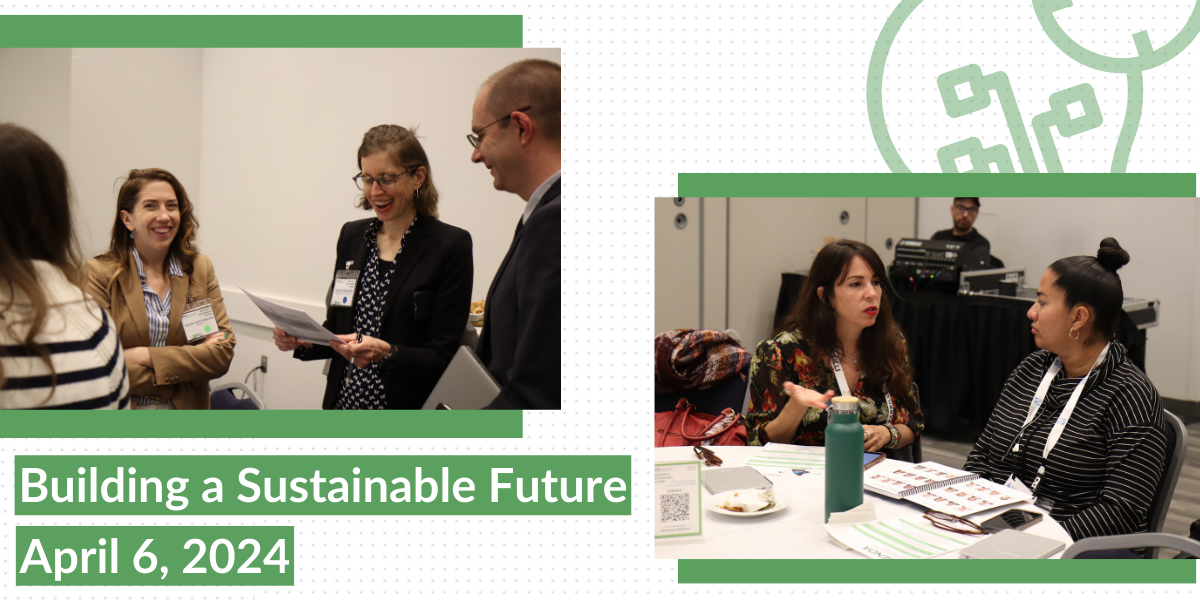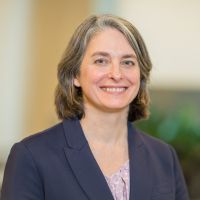Community colleges are well positioned to take a leading role in transitioning the U.S. economy to green technologies to address climate change. They are spread around the country, in rural, suburban, and urban areas. They play a central role in training the technical workforce. And they are tied tightly to local businesses and the broader community. But they also face challenges such as underfunding and overworked staff. They need greater investment and support to form connections with other colleges and organizations to share ideas and programs.
In a nascent effort to connect community colleges, workforce development organizations, funders, policymakers, and others interested in combating climate change and preparing students for the green economy, CCRC hosted an all-day meeting on April 6 in Louisville, KY, in advance of the American Association of Community Colleges annual meeting. The participants included researchers and college leaders, as well as representatives of various foundations, the U.S. Environmental Protection Agency, the Department of Energy, the Department of Education, and the National Renewable Energy Lab. Along with creating connections, the goals of the gathering included understanding the ways community colleges can contribute to the green energy transition and beginning to develop a research agenda around community colleges and climate change.
Addressing climate change can feel overwhelming, said Jeffrey Clary, senior director for climate strategies at the Foundation for California Community Colleges, in opening remarks. But every college can do something, including mitigation and adaptation work that has immediate benefits for workers and communities.
“Maybe it’s adapting a workforce training program to make sure future workers will have access to good jobs in green industries in your region,” Clary said. “And maybe it’s finding campus sustainability initiatives that fit your priorities and budgets.”
The green jobs convening will be summarized in a call to action. Sign up for the CCRC newsletter to receive it and all of our publications. To connect with the green jobs team, email Maggie Fay at fay@tc.edu.
In panels and breakout sessions, participants agreed that a large part of community colleges’ role is training students for the green jobs that are key to the energy transition, either by building new programs or by expanding the training in electrical systems, HVAC, auto repair, and other workforce programs that teach related skills. And they talked about standout initiatives that could be examples for other colleges and states.
Illinois, for example, has invested hundreds of millions of dollars in green jobs, including a large program to develop electric vehicle training programs at community colleges, said David Husemoller, executive director of the Illinois Green Economy Network (IGEN). By creating a network of colleges, IGEN is able to coordinate faculty and curriculum and spread the knowledge it has gained in building the earlier programs.
Though Illinois is led by Democrats, Republican-led states also see a compelling argument for building job training for growing industries, said Kevin Boys, executive director of Community Colleges of Appalachia, an association of community colleges in the 13 states in the region.
“This is at heart a workforce development issue at its core,” said Cameron Sublett, an associate professor at the University of Tennessee, Knoxville.
Another theme throughout the convening was ensuring that the jobs created in green industries are “good jobs” and that training programs at colleges are accessible to all. Currently, green jobs account for 23% of U.S. employment, but the workforce is 80% White and 75% male, said Rachel Rush-Marlowe, the founder and executive director of ResearchEd, citing Unbounded Associates. Part of equitable access is ensuring colleges are not tracking lower income or Black and Latino students into short-term programs with few good job prospects, participants said. Irene Shaver, the program administrator for climate solutions at the Washington State Board for Community and Technical Colleges, said the transition to clean energy needs to be not only green but also just.
“If there’s not real, meaningful leadership from community colleges, we will not get the just part” of a just transition, Shaver said.
Colleges also need to update curriculum and materials and train instructors to work with women and men from backgrounds that might be less common in their industry, said Girard Melancon, director of the National Green Jobs Advisory Council.
In addition to training the workforce, community colleges must educate their students and the broader community about the scientific and social aspects of climate change and the green transition, said Jo Tavares, the director of the California Center for Climate Change Education, based at West Los Angeles College in Culver City. The center’s climate across the curriculum program helps professors build lessons on climate into every discipline, Tavares said. The center is also developing internships and reaching out to the community as they plan initiatives.
“We were created to really focus on the climate justice aspect of this crisis,” she said.
Community colleges are at a watershed moment, with billions of dollars in funding flowing down from the Department of Energy, the Environmental Protection Agency, and other federal agencies to states and industries and some to colleges. Many of the federal funding proposals must explain how they will benefit the community and produce quality jobs, and one way to satisfy that is for industry to partner with community colleges.
“There’s competitive funding that’s going through states to higher ed institutions, to nonprofits, and labor unions.” said Jenny Wiedower, a fellow at the Department of Energy.
Despite the challenges, a movement is growing for community colleges to take a central role in the transition to a green economy and to serve as community hubs in climate education and mitigation. CCRC will synthesize the lessons from the convening to help sustain the momentum and build a community of practice among colleges and others committed to this work.
“Let’s build this community and prove to the world that our institutions are up to the task,” said Clary from the Foundation for California Community Colleges. “We are the places in higher education that are getting this job done.”





